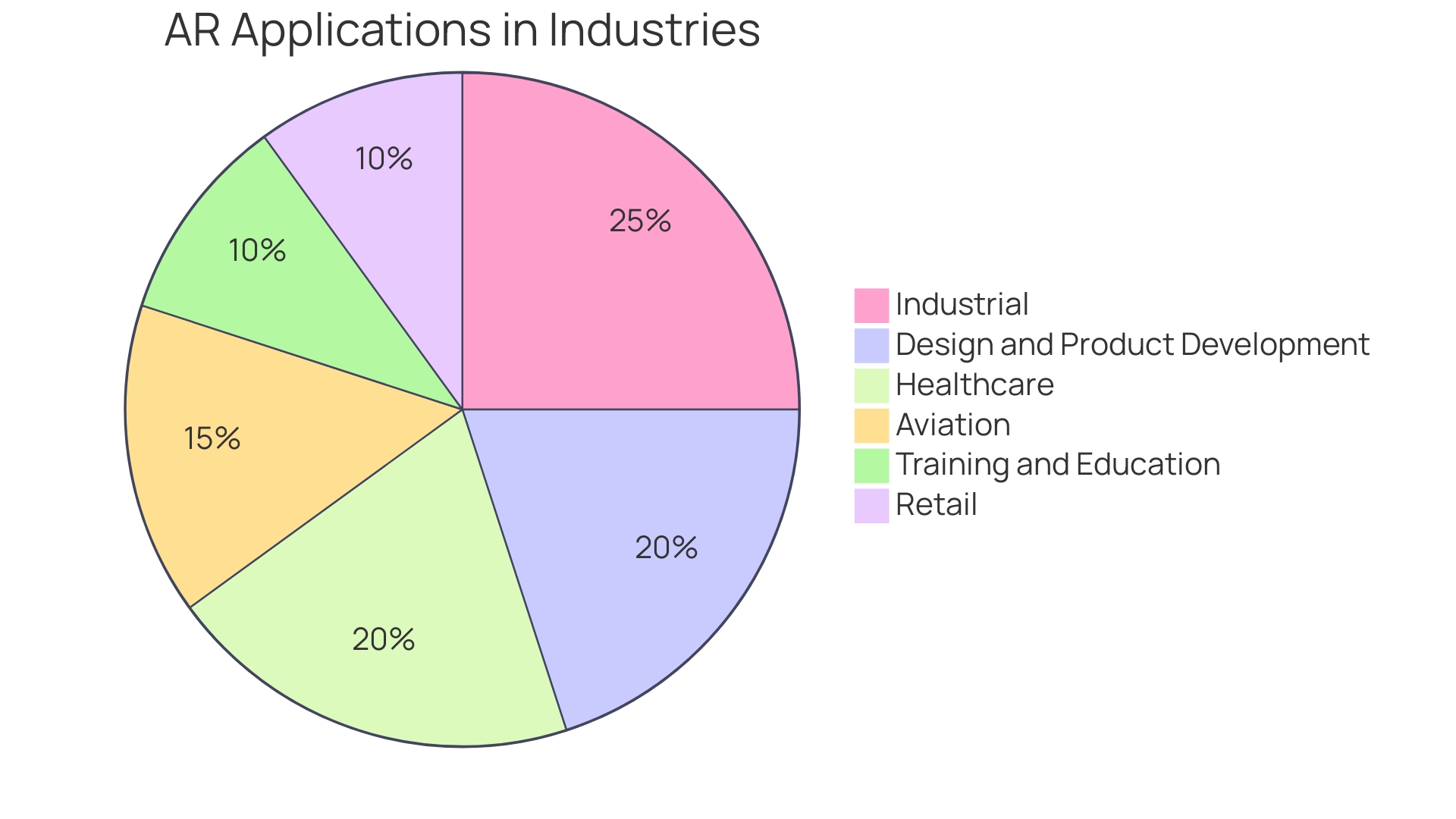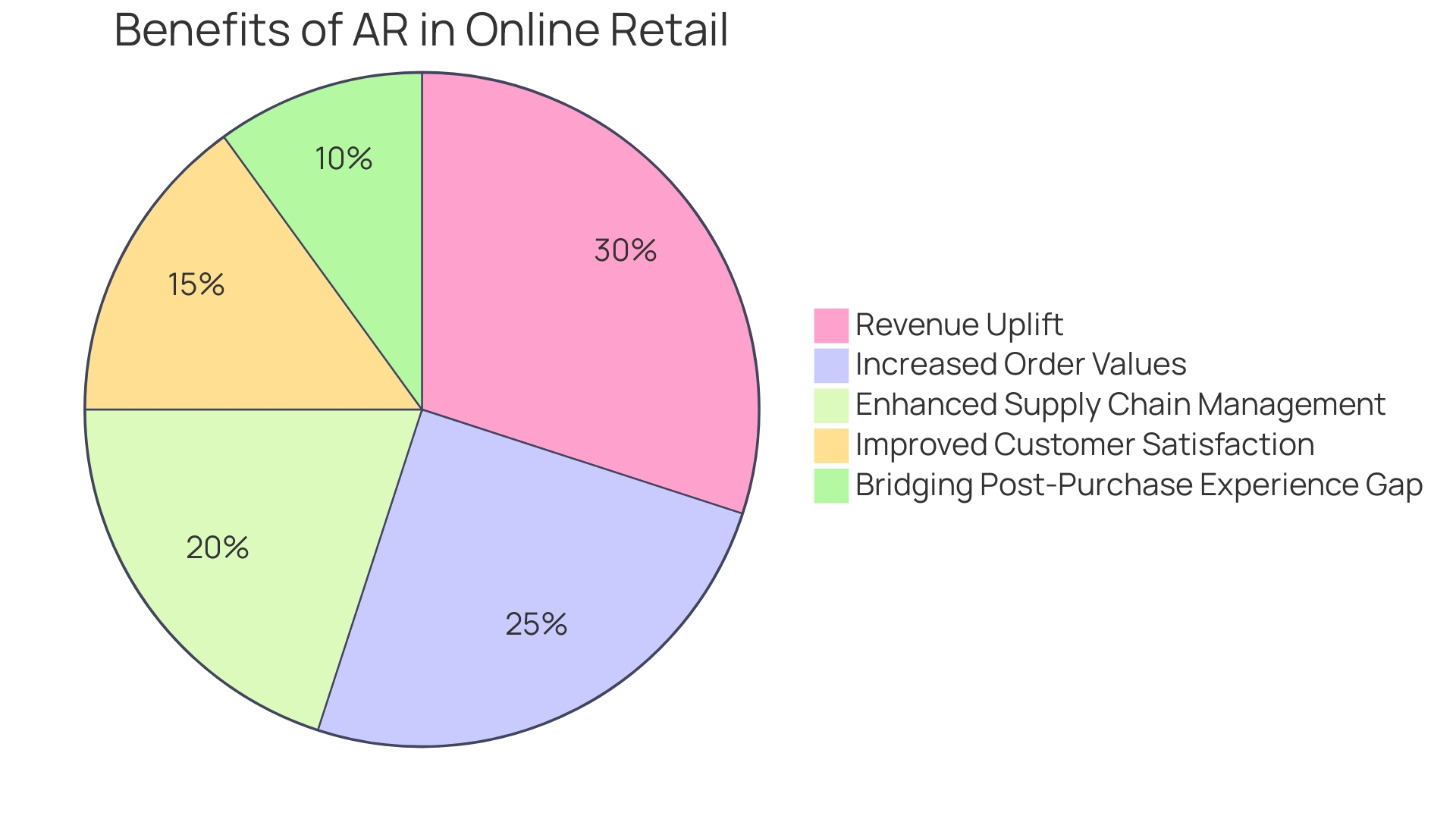Introduction
Augmented Reality (AR) is revolutionizing various industries by blending the digital and physical worlds, transforming the way we interact with our surroundings. From aviation to online retail, AR is making waves with its ability to provide immersive and personalized experiences. In the online retail space, AR is bridging the gap between convenience and tangibility, allowing customers to virtually try on products and visualize how they would look in their own environment.
This not only enhances the shopping experience but also reduces return rates, making AR a key differentiator for online retailers. In this article, we will explore the importance of AR in online retail, its implementation strategies, and how businesses can leverage the right AR platform to create engaging content that resonates with customers. Get ready to discover how AR is reshaping the future of online retail.
Understanding Augmented Reality (AR)
Augmented Reality (AR) is transforming the way we interact with the world by superimposing digital data onto our physical environment. This technology, accessible through everyday devices such as smartphones and tablets, as well as advanced wearables like smart glasses, is making waves across various industries.
Take Lufthansa's collaboration with Meta and MSM.digital, for example, which resulted in a mixed reality application that virtually places users in a plane's Business Class seat. This experience, delivered via the Meta Quest Pro headset, allows users to interact with features such as dining trays and private cabins, blurring the lines between the virtual and the real.
The potential of AR extends far beyond aviation. In the industrial sector, AR empowers workers with immediate access to information on machinery and products, enhancing their productivity and safety.
It's revolutionizing design and product development by enabling the creation of virtual prototypes that can be examined from every angle before physical production. Furthermore, AR is proving to be a valuable tool in training and education, offering personalized learning experiences that cater to individual paces and preferences. It's particularly beneficial for remote collaboration, where experts can provide visual guidance to novices through AR-enabled devices. The market's enthusiasm for AR is evident in the significant investments from tech giants like Facebook Corporation, Intel, and Qualcomm. With industries from healthcare to retail rapidly adopting AR, the technology is poised to change how we perceive and interact with our surroundings, offering an enriched, immersive experience that was once the realm of science fiction.

Why Augmented Reality is Important in Online Retail
Augmented Reality (AR) is transforming the e-commerce landscape by providing a seamless blend of the digital and physical worlds, thus enriching the online shopping experience. By allowing customers to project virtual products into their own environment, AR has become a pivotal tool in bridging the gap between the convenience of online shopping and the tangibility of in-store purchasing.
Companies like Walmart have embraced AR to let customers try on eyewear virtually, ensuring that the products fit their style and preferences, which is critical given that return rates can be substantially reduced when customers are confident in their online purchases. The Cisco Store, for example, has innovated the use of AR through its Cisco Store Xplorer app, which detects nearby stores and provides a personalized shopping experience, demonstrating the technology's ability to enhance customer engagement.
Similarly, Etsy has leveraged AR to allow users to visualize how artwork would appear in their living spaces, catering to the unique nature of its sellers' offerings. These advancements are not just about novelty; they represent a shift towards a more interactive and personalized shopping journey. As online retail continues to claim a larger share of the market, with e-commerce sales reaching 14.9% of all retail sales in the first three quarters of 2023, AR is positioned as a key differentiator in the online retail space. This technology not only captivates customers but also serves as a testament to the retail industry's commitment to innovation, customer experience, and sustainability.
Implementing Augmented Reality in Online Retail
Augmented Reality (AR) is rapidly transforming the online retail landscape, offering consumers a seamless blend of the digital and physical shopping experience. As retailers strive to enhance customer engagement and reduce return rates, AR serves as a vital tool.
The Kooples, for example, utilized Snapchat's AR capabilities and a global distribution strategy to allow customers to virtually try on clothing at home, integrating the experience across multiple communication channels. Cisco Store's AR app, the Cisco Store Xplorer, offers a personalized and informative in-store journey, while Etsy's AR feature for iOS app users allows them to visualize artwork in their space before purchase, despite the challenge of representing a vast array of unique, customizable items in 3D.
These implementations are not mere novelties; they address a critical gap in online shopping—the inability to try on merchandise. High return rates, often caused by sizing issues, are a significant challenge for retailers.
AR technology can mitigate this by enabling virtual try-ons, with brands like Mecca and Adidas already adopting virtual fitting solutions. The data underscores this need, revealing that online shoppers frequently buy multiple sizes to ensure a proper fit, leading to a cumbersome return process for both customers and retailers. The current shift in user behavior also highlights the importance of AR. As Amazon's daily mobile app users in the UK decreased by over one million, newcomers like Temu and Shein have seen sharp increases in user numbers, indicating a market ripe for innovative engagement strategies. Incorporating AR into online retail not only elevates the customer experience but also aligns with the changing dynamics of consumer preferences and the competitive digital marketplace.

Step 1: Define Objectives and Target Audience
As the retail landscape evolves, augmented reality (AR) emerges as a transformative tool for businesses seeking to enhance the customer experience. The technology's ability to blend digital content with the physical world has diminished the gap between online and in-store shopping, offering a more engaging and interactive way for customers to connect with products.
AR's potential to revolutionize retail is exemplified by its capacity to reduce product returns. Customers can virtually 'try on' apparel, gauging the fit and look in real-time, thereby making more informed decisions and reducing the likelihood of returns due to size or style issues.
This not only improves customer satisfaction but also diminishes the logistical and environmental burdens associated with reverse logistics. Recent statistics underscore the growing acceptance of AR in retail; small businesses are leveraging AR to provide 'try-and-buy' experiences, enhancing customer service and expanding their market reach beyond geographical limitations.
This is particularly advantageous for online retailers, who can now offer personalized product previews, fostering a sense of confidence and satisfaction in the purchase process. Furthermore, AR's role extends into industrial applications, where it aids in asset identification, knowledge transfer, and safety operations, exemplifying its versatility across various sectors. As businesses like Rivian aim for sustainability, AR can play a critical role in achieving efficient, waste-minimizing processes. The digital transformation is not just about adopting new technologies but redefining the shopping journey to make it more personalized, efficient, and enjoyable. In this retail renaissance, AR stands out as a key player in creating a seamless shopping experience that keeps customers returning.
Step 2: Choose the Right AR Platform
Choosing the right Augmented Reality (AR) platform is crucial for enhancing the online retail experience. As evidenced by Artillery Intelligence, AR's robust performance metrics outshine traditional 2D benchmarks, making it clear that AR is not just a novelty but a powerful tool for retail engagement and sales.
For instance, Sweaty Betty, a premium sportswear brand, leveraged AR to simplify product discovery, resulting in a significant uplift in revenue, including a 52% increase in items per transaction and a 57% rise in order values. Furthermore, personalized AR experiences like time-sensitive messaging led to a 20.4% increase in purchases from new EU customers.
Zara's success with AR in its Just-In-telligent supply chain system is another testament to the power of AR integration. By monitoring market trends and consumer demands in real-time, Zara has seen improved customer satisfaction and loyalty, demonstrating the importance of a holistic approach to AR in retail.
Despite the potential, there's a lack of awareness and knowledge on how to effectively develop and integrate AR into omnichannel operations. However, the urgency to adopt AR is highlighted by the recent decline in Amazon's daily mobile app users in the UK, contrasted with the rapid user growth of platforms like Temu and Shein. The retail landscape is changing, and AR is a disruptive force that can't be ignored. With 83% of consumers seeing room for improvement in the post-purchase experience and only 40% of retail leaders believing it's fully optimized, it's evident that AR can play a pivotal role in bridging this gap. By selecting an AR platform that aligns with your retail needs - considering ease of use, compatibility, scalability, and features - you can not only meet customer expectations but exceed them, ensuring your brand remains competitive in the ever-evolving world of online retail.

Step 3: Create Engaging AR Content
Augmented Reality (AR) is revolutionizing online retail by offering interactive and visually appealing content that enhances the user experience. As AR technology becomes increasingly prevalent, with an estimated three-quarters of the population engaging with it by 2025, retailers must integrate it seamlessly into their omnichannel strategies. This integration is not just about the novelty of 3D models and animations; it's about providing context that empowers consumers to make confident purchasing decisions.
With the tactile experience being important for more than half of shoppers (55%), and a third using in-store visits to compare options (35%), AR can bridge the gap between the physical and digital realms. Retailers can leverage AR to reduce returns and increase satisfaction by allowing customers to visualize products in their own space, thus aligning with the 69% of consumers who find inspiration from in-store experiences. The urgency for adopting such technologies is underscored by the shifting landscape of online shopping, where giants like Amazon are seeing a dip in daily mobile app users, while newcomers like Temu and Shein are experiencing rapid growth.
Amidst this competitive market, providing enriched product experiences is vital for retaining customers and ensuring repeat purchases. As Ben Hancock, a freelance writer, puts it, we are in the midst of a retail renaissance where shopping experiences are becoming more personalized, efficient, and enjoyable. By adopting AR, retailers can not only meet but exceed the evolving expectations of consumers, ensuring their place in the future of retail.

Conclusion
In conclusion, Augmented Reality (AR) is revolutionizing online retail by seamlessly blending the digital and physical worlds. It enhances the customer experience by allowing virtual product try-ons and visualizing products in customers' own environments, reducing return rates.
AR is important in online retail as it bridges convenience and tangibility, offering a personalized and interactive shopping journey. It serves as a key differentiator in the competitive digital marketplace, showcasing innovation, customer experience, and sustainability.
Implementing AR requires selecting the right platform that aligns with business needs. Successful implementations drive revenue growth by simplifying product discovery, improving customer satisfaction, and monitoring market trends in real-time.
Creating engaging AR content is essential for providing an immersive user experience. By integrating visually appealing 3D models and animations into omnichannel strategies, retailers empower consumers to make confident purchasing decisions.
As we navigate this retail renaissance, adopting AR becomes increasingly important. By embracing AR technology, retailers meet evolving consumer expectations and ensure their place in the future of retail. In summary, AR revolutionizes online retail by enhancing engagement and reducing return rates. Leveraging the right platform and creating engaging content enables businesses to transform the online shopping experience and stay competitive. Embracing AR means redefining the shopping journey to be more personalized, efficient, and enjoyable for customers.





